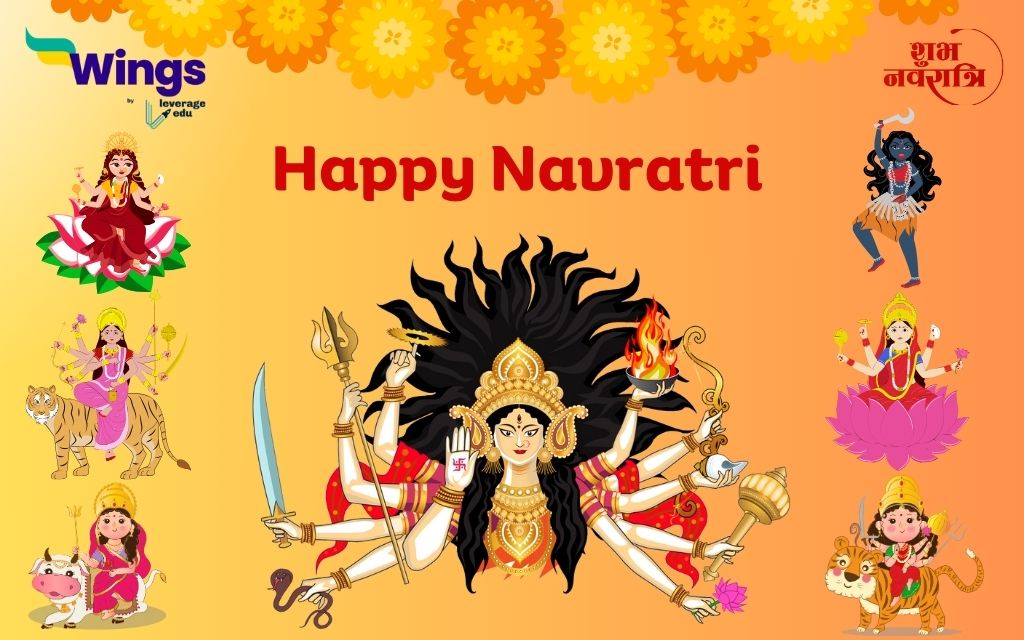Navratri 2023 will start on 14th October and will continue till 24th October. This nine-night Hindu festival is dedicated to the worship of the goddess Durga. The word ‘Navratri’ is derived from two Sanskrit words: ‘Nav’ meaning nine and ‘Ratri’ meaning night. It typically falls in the months of September or October, and the dates vary each year based on the Hindu lunar calendar.
From observing fasting to performing dance forms like garba, there are several integral parts of Navratri. This religious-cum-cultural festival is celebrated with different customs and traditions in different regions of India, and the specific rituals and deities may vary. Let’s dive deeper into this 9-day-long festival and understand all its aspects.
Contents
Also Read: Celebrating Navratri With Garba
According to the Hindu calendar, Navratri 2023 will start on 14th October and will continue till 24th October. On this day, people from different cultural backgrounds will celebrate this festival according to their traditional and cultural ways. In parts of Eastern India, Navratri is known as Durga Puja. According to legends, there was a fierce battle between Goddess Durga and the buffalo demon Mahishasur, which resulted in the victory of Goddess Durga.
In states like Gujarat and Rajasthan, Navratri celebrations consist of arti and garba. People gather in large groups, wearing colourful attire, and dance to traditional folk music.
During the nine nights of Navratri, nine different forms of the goddess Durga are worshipped. Each of these forms has its own unique name and significance. The nine forms of the goddess, known as the Navadurga or the nine manifestations of Durga, are listed below.
1. Shailaputri: On the first day of Navratri, the goddess is worshipped as Shailaputri, which means ‘Daughter of the Mountain.’ She is depicted riding a bull and holding a trident and lotus.
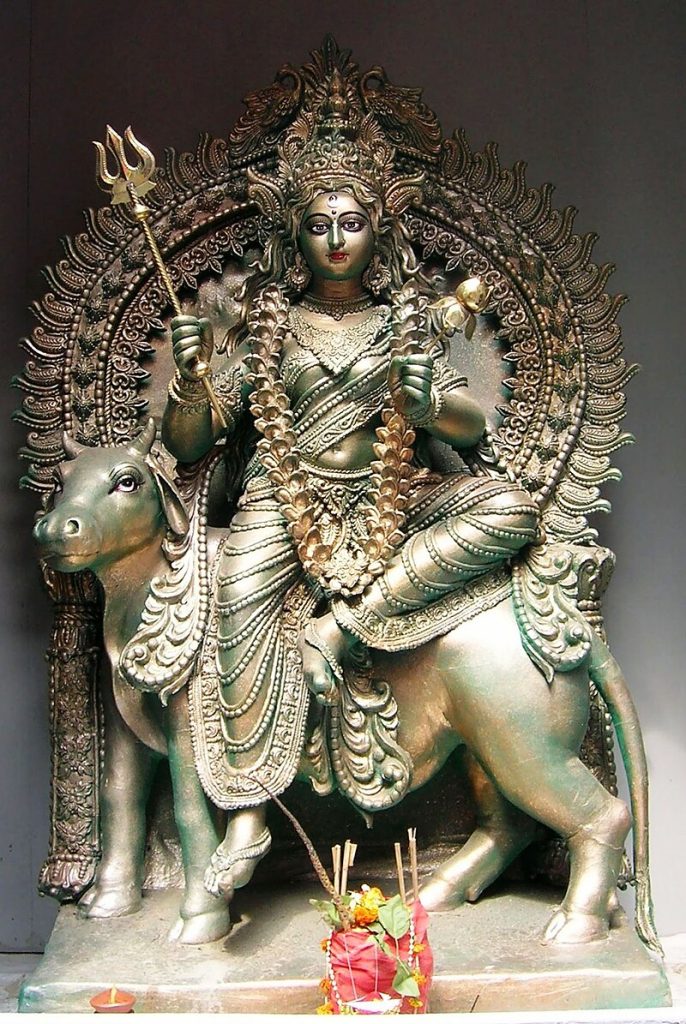
Must Read: 9 Days of Navratri Devi Names
2. Brahmacharini: The second day is dedicated to the goddess in her form as Brahmacharini, symbolizing the pursuit of knowledge and penance. She is depicted as walking with a rosary and a kamandalu (water pot).
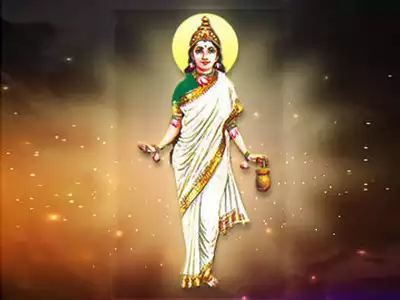
3. Chandraghanta: On the third day, Chandraghanta is worshipped. She has a crescent moon-shaped ornament on her forehead and is known for her fierce appearance, symbolizing bravery and courage.
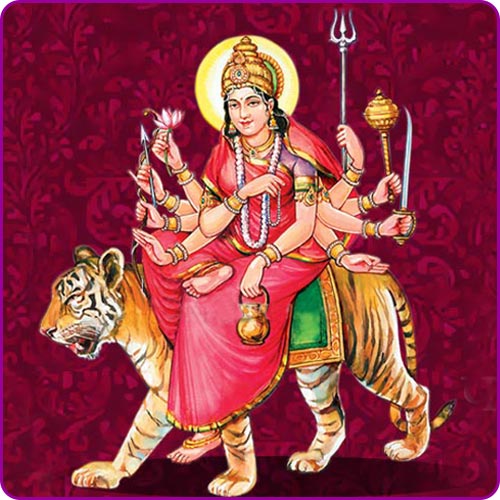
4. Kushmanda: The fourth day is dedicated to Kushmanda, who is believed to have created the universe with her smile. She is depicted as having eight or ten hands and holding various objects.
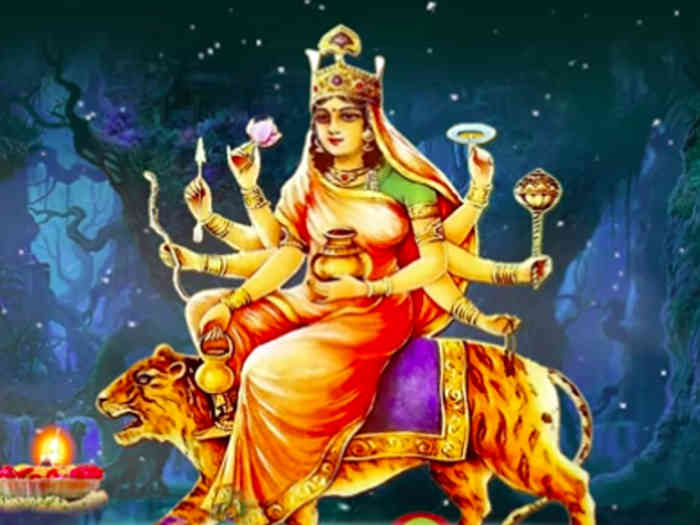
5. Skandamata: On the fifth day, the goddess is revered as Skandamata, the mother of Lord Skanda (Kartikeya), who is considered the commander of the gods. She is depicted holding her son on her lap.

6. Katyayani: The sixth day is dedicated to Katyayani, who is known for her warrior-like appearance and is associated with strength and valour.
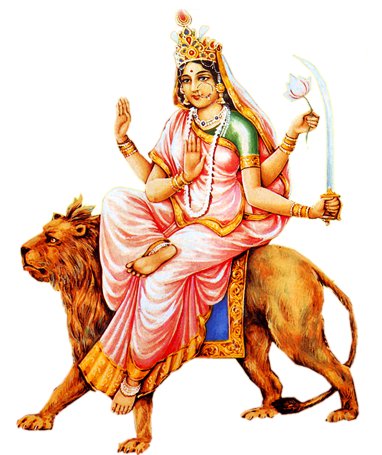
7. Kaalratri: On the seventh day, Kaalratri is worshipped. She is fierce and dark in complexion, symbolizing the destructive and protective aspect of the goddess. She holds a cleaver and a torch.
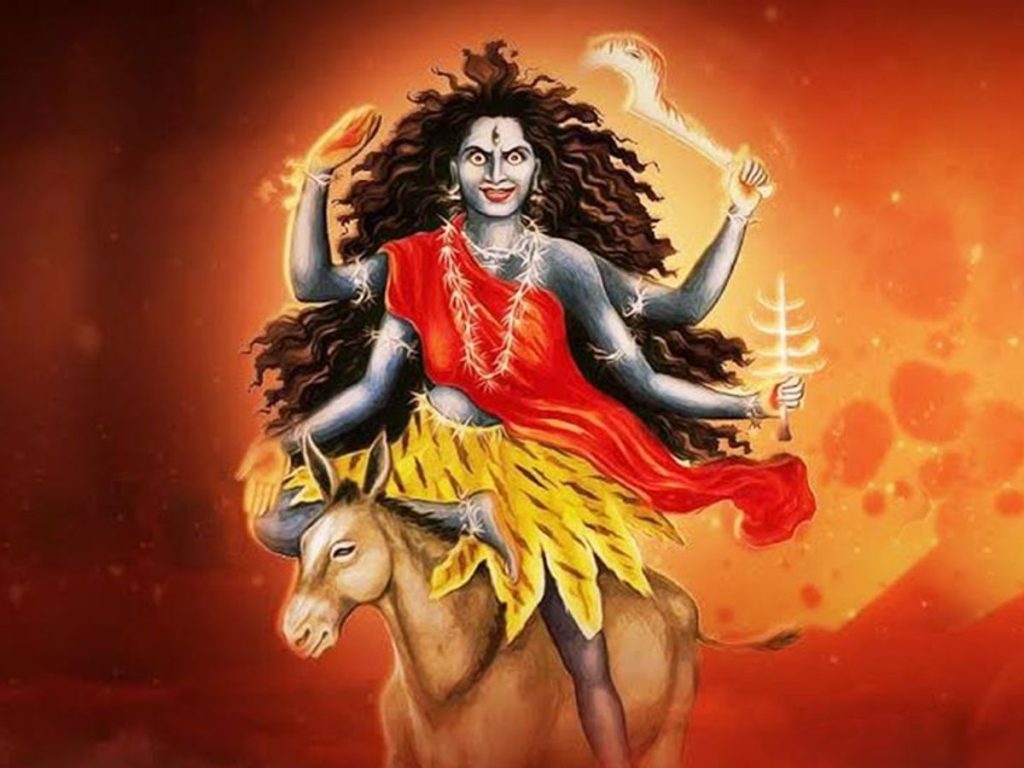
8. Maha Gauri: The eighth day is dedicated to Maha Gauri, who is depicted as radiant and compassionate. She is often shown holding a trident and a damaru (a small drum).

9. Siddhidatri: The ninth day of Navratri is dedicated to Siddhidatri, who is believed to fulfil the wishes and grant spiritual powers. She is depicted with four arms and is often surrounded by Siddhas (enlightened beings).
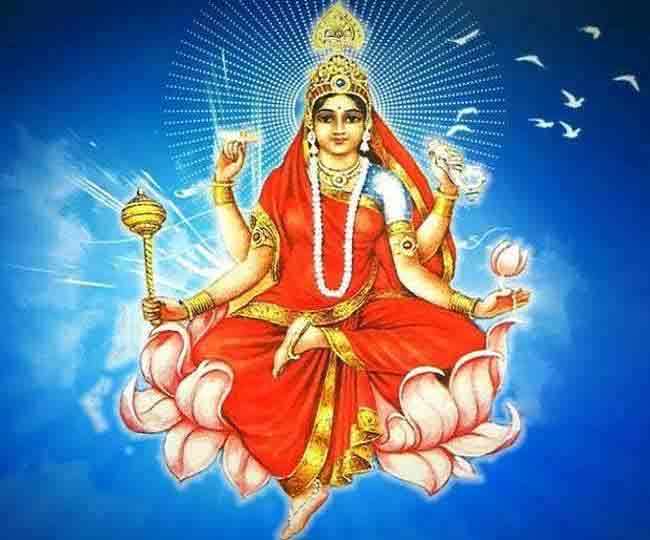
Navratri rituals from region to region in India but there are some common practices observed during this nine-day festival. Starting from the Ghata Sthapana on the first day of Navratri to the immersion of Ghata on the final day, there are several rituals involved.
- On the first day, a pot or Kalash is established in the house or temple. The pot is filled with water, and a coconut is placed on top. This is called ‘Ghata Sthapana’ and is considered to symbolize the presence of the goddess.
- Devotees perform daily prayers and aarti (a form of worship with lamps or candles) to the goddess.
- Another integral part is fasting. It involves abstaining from certain foods, such as grains, and eating only one meal a day.
- Devotees often wear traditional and colourful attire during Navratri. Women wear a traditional skirt and blouse called chaniya cholis in vibrant colours, while men may wear kurta-pyjamas.
- Traditional dance forms like Garba and Dandiya Raas are a significant part of Navratri celebrations in some regions.
The significance of Navratri varies based on the regional and cultural context within India. The primary significance of Navratri is the worship of the goddess, particularly Goddess Durga and her various forms. Each day of the nine-night festival is dedicated to a different manifestation of the goddess, symbolizing her power, benevolence, and protection.
- The victory of Durga over Mahishasura is a metaphor for the triumph of righteousness over wickedness. It serves as a reminder of the eternal battle between good and evil and the ultimate victory of virtue.
- This festival marks a transition from one season to another, often from the monsoon to autumn.
- Navratri is celebrated with cultural fervour, including traditional dance forms like Garba and Dandiya.
- For many, Navratri is a time for heightened devotion, self-discipline, and spiritual growth.
- This festive offers an opportunity to bring families and communities together. It is a time for social interactions, visiting temples, and participating in festive events
Related Articles:
FAQs
Navratri 2023 date is 14th October to 24th October. During this time of the year, various cultural and religious activities are organised at regional levels.
The primary reason for celebrating Navratri is to honour and worship the various forms of the goddess Durga. It is also celebrated during the change of seasons, typically from monsoon to autumn in India. It brings communities and families together, fostering a sense of unity and social harmony.
The significance of Navratri includes worshipping the goddess, victory of good over evil, revealing and purification, cultural celebrations, harvest festivals, etc.
For more information on such interesting topics, visit our trending events website and follow Leverage Edu.
 One app for all your study abroad needs
One app for all your study abroad needs














